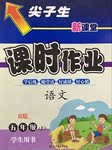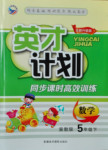
Chinese ________ numerous __________ to _________ ideas, objects or actions.
中国人发明了大量的汉字来表示思想,物体和行为。
 尖子生新课堂课时作业系列答案
尖子生新课堂课时作业系列答案 英才计划同步课时高效训练系列答案
英才计划同步课时高效训练系列答案科目:高中英语 来源:山东省威海市2010届高三第二次模拟考试英语试题 题型:050
| |||||||||||||||||||||||||||||||||||||||||||||||||||||||||||||||||||||||||
查看答案和解析>>
科目:高中英语 来源:山东省威海市2010届高三第二次模拟考试英语试题 题型:阅读理解
It looks exactly like other handicraft (手工艺品) shops in a traditional Chinese hutong, or alley, except that each item has a story. The city's first-of-its-kind charity shop, owned by Nathan Zhang, sells Chinese handicrafts along with used books, clothes and other items. The concept is that money from what is sold is donated to help rural (农村的) women in China.
“Many NGOs (non-governmental organizations) produce their own things but don't have a place to sell it,” said Zhang, who returned to Beijing in 2008 after working in Canada for nearly a decade in the telecommunications world. “A rural women's group tried to open a little shop but only sold two things. When they put their products in my shop, everything sold out.”
Located in Wudaoying Hutong in Dongcheng district, Brand Nu's walls are lined with handicrafts from a number of different NGO supported projects aimed at benefiting women across the country. The other half of the space is filled with almost brand-new clothes that have been donated from Beijing citizens. The jackets, dresses, tops and pants sell for around 30 yuan ($4.40) each.
Most of the money Brand Nu gets goes directly to the Beijing Cultural Development Center for Rural Women. The NGO offers a number of programs for poor women, including literacy classes (识字班), support networks and mental health education.
Zhang is also working with a local Scottish designer to create a clothing line made from the fabric (织物) of second-hand garments. And he is collecting books and raising money to help the NGO build a library near Beijing. He plans on expanding his product line soon as well, engaging more disadvantaged women to make sweaters, soaps and other items that he can sell in Beijing to help raise their socioeconomic status in the countryside.
Yet with ambitions come worries. Right now Zhang is operating on a shoestring budget and looking for work on the side to support both his business and his family. “I wanted to do something meaningful,” said Zhang. “If you can help one woman, you can help an entire family.”
61. The name of the charity shop is ______.
A. Nathan Zhang B. NGO C. Wudaoyin Hutong D. Brand Nu
62. The owner of the charity shop ______.
A. is a returned overseas Chinese
B. has long been working for the charity cause
C. is professionally engaged in telecommunication
D. is also the head of an NGO
63. The charity shop ______.
A. sells goods to poor women at low prices
B. sends donated clothes to poor rural women
C. opens literacy classes for illiterate women
D. gives money to poor women through an NGO
64. The last paragraph but one tells us that Zhang tries to ______.
A. open more charity shops
B. donate more money to the rural women
C. help the women live better through their own efforts
D. find jobs in Beijing for the rural women
65. The article is mainly about ______.
A. the charity cause in Beijing B. Beijing’s first charity shop and its owner
C. the living condition of rural women D. the difficult situation a charity worker faces
查看答案和解析>>
科目:高中英语 来源:山东省威海市2010届高三二模 题型:阅读理解
It looks exactly like other handicraft (手工艺品) shops in a traditional Chinese hutong, or alley, except that each item has a story. The city's first-of-its-kind charity shop, owned by Nathan Zhang, sells Chinese handicrafts along with used books, clothes and other items. The concept is that money from what is sold is donated to help rural (农村的) women in China.
“Many NGOs (non-governmental organizations) produce their own things but don't have a place to sell it,” said Zhang, who returned to Beijing in 2008 after working in Canada for nearly a decade in the telecommunications world. “A rural women's group tried to open a little shop but only sold two things. When they put their products in my shop, everything sold out.”
Located in Wudaoying Hutong in Dongcheng district, Brand Nu's walls are lined with handicrafts from a number of different NGO supported projects aimed at benefiting women across the country. The other half of the space is filled with almost brand-new clothes that have been donated from Beijing citizens. The jackets, dresses, tops and pants sell for around 30 yuan ($4.40) each.
Most of the money Brand Nu gets goes directly to the Beijing Cultural Development Center for Rural Women. The NGO offers a number of programs for poor women, including literacy classes (识字班), support networks and mental health education.
Zhang is also working with a local Scottish designer to create a clothing line made from the fabric (织物) of second-hand garments. And he is collecting books and raising money to help the NGO build a library near Beijing. He plans on expanding his product line soon as well, engaging more disadvantaged women to make sweaters, soaps and other items that he can sell in Beijing to help raise their socioeconomic status in the countryside.
Yet with ambitions come worries. Right now Zhang is operating on a shoestring budget and looking for work on the side to support both his business and his family. “I wanted to do something meaningful,” said Zhang. “If you can help one woman, you can help an entire family.”
1.The name of the charity shop is ______.
A. Nathan Zhang B. NGO C. Wudaoyin Hutong D. Brand Nu
2.The owner of the charity shop ______.
A. is a returned overseas Chinese
B. has long been working for the charity cause
C. is professionally engaged in telecommunication
D. is also the head of an NGO
3.The charity shop ______.
A. sells goods to poor women at low prices
B. sends donated clothes to poor rural women
C. opens literacy classes for illiterate women
D. gives money to poor women through an NGO
4.The last paragraph but one tells us that Zhang tries to ______.
A. open more charity shops
B. donate more money to the rural women
C. help the women live better through their own efforts
D. find jobs in Beijing for the rural women
5.The article is mainly about ______.
A. the charity cause in Beijing B. Beijing’s first charity shop and its owner
C. the living condition of rural women D. the difficult situation a charity worker faces
查看答案和解析>>
科目:高中英语 来源: 题型:阅读理解
It looks exactly like other handicraft (手工艺品) shops in a traditional Chinese hutong, or alley, except that each item has a story. The city's first-of-its-kind charity shop, owned by Nathan Zhang, sells Chinese handicrafts along with used books, clothes and other items. The concept is that money from what is sold is donated to help rural (农村的) women in China.
“Many NGOs (non-governmental organizations) produce their own things but don't have a place to sell it,” said Zhang, who returned to Beijing in 2008 after working in Canada for nearly a decade in the telecommunications world. “A rural women's group tried to open a little shop but only sold two things. When they put their products in my shop, everything sold out.”
Located in Wudaoying Hutong in Dongcheng district, Brand Nu's walls are lined with handicrafts from a number of different NGO supported projects aimed at benefiting women across the country. The other half of the space is filled with almost brand-new clothes that have been donated from Beijing citizens. The jackets, dresses, tops and pants sell for around 30 yuan ($4.40) each.
Most of the money Brand Nu gets goes directly to the Beijing Cultural Development Center for Rural Women. The NGO offers a number of programs for poor women, including literacy classes (识字班), support networks and mental health education.
Zhang is also working with a local Scottish designer to create a clothing line made from the fabric (织物) of second-hand garments. And he is collecting books and raising money to help the NGO build a library near Beijing. He plans on expanding his product line soon as well, engaging more disadvantaged women to make sweaters, soaps and other items that he can sell in Beijing to help raise their socioeconomic status in the countryside.
Yet with ambitions come worries. Right now Zhang is operating on a shoestring budget and looking for work on the side to support both his business and his family. “I wanted to do something meaningful,” said Zhang. “If you can help one woman, you can help an entire family.”
61. The name of the charity shop is ______.
A. Nathan Zhang B. NGO C. Wudaoyin Hutong D. Brand Nu
62. The owner of the charity shop ______.
A. is a returned overseas Chinese
B. has long been working for the charity cause
C. is professionally engaged in telecommunication
D. is also the head of an NGO
63. The charity shop ______.
A. sells goods to poor women at low prices
B. sends donated clothes to poor rural women
C. opens literacy classes for illiterate women
D. gives money to poor women through an NGO
64. The last paragraph but one tells us that Zhang tries to ______.
A. open more charity shops
B. donate more money to the rural women
C. help the women live better through their own efforts
D. find jobs in Beijing for the rural women
65. The article is mainly about ______.
A. the charity cause in Beijing B. Beijing’s first charity shop and its owner
C. the living condition of rural women D. the difficult situation a charity worker faces
查看答案和解析>>
湖北省互联网违法和不良信息举报平台 | 网上有害信息举报专区 | 电信诈骗举报专区 | 涉历史虚无主义有害信息举报专区 | 涉企侵权举报专区
违法和不良信息举报电话:027-86699610 举报邮箱:58377363@163.com